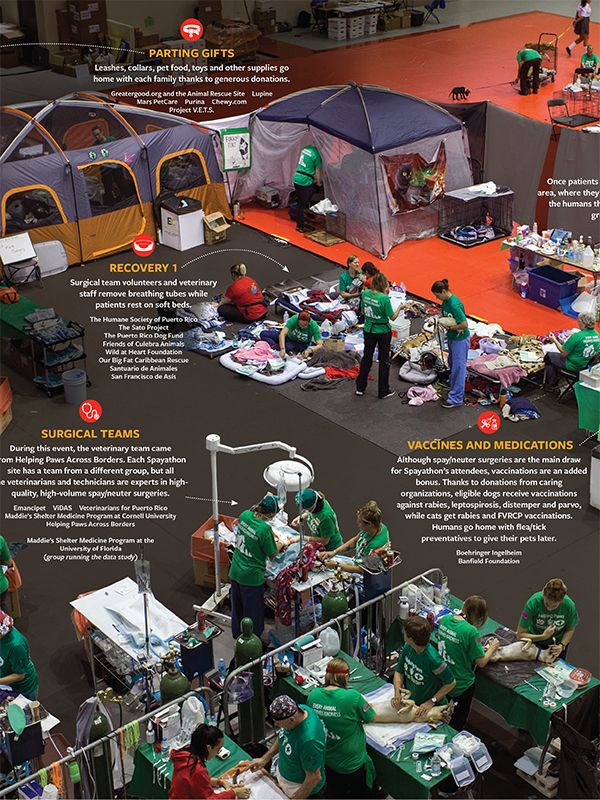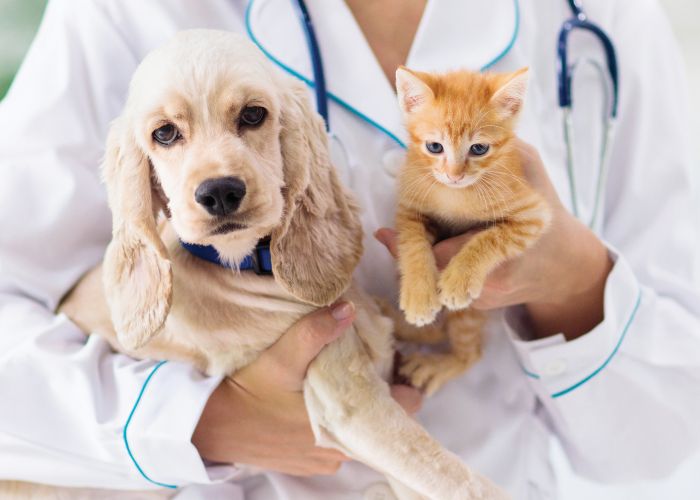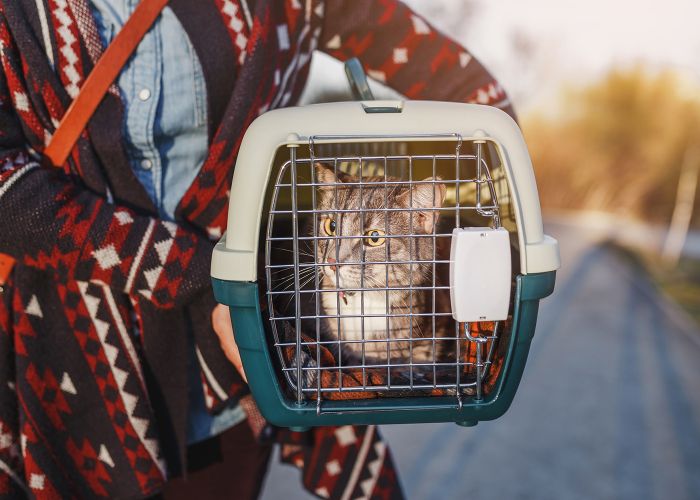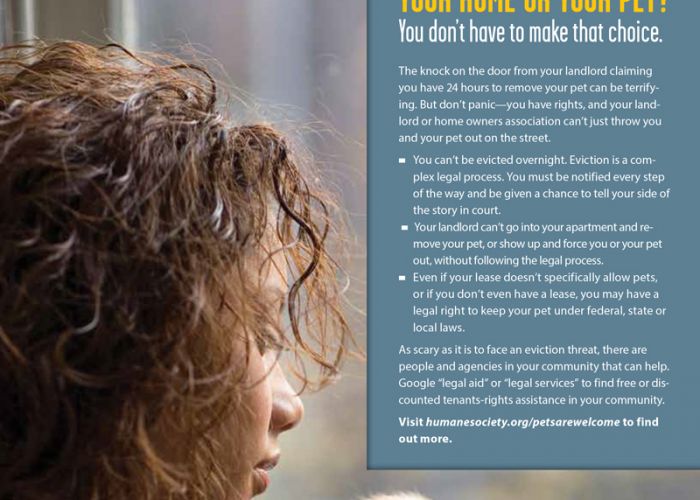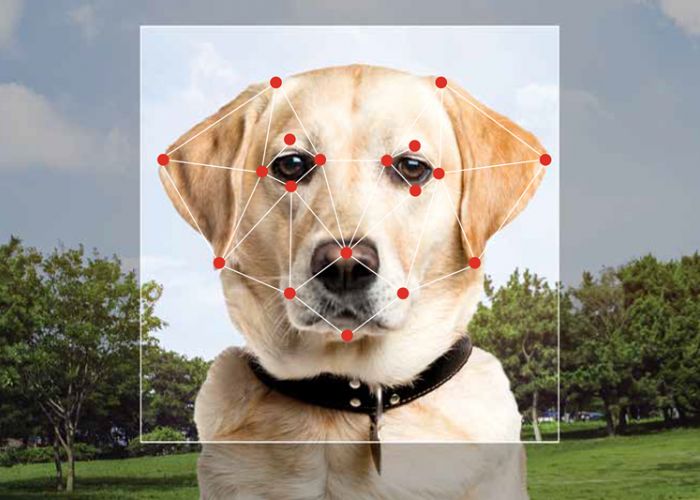The big picture
How volunteers and donors are making history in Puerto Rico

The Great Dane refused to wake up. Lying on a soft towel in the recovery area, the huge dog snoozed happily away, oblivious to his family sitting by his side and stroking him. They needed to get him walking so they could head home, but he wasn’t interested.
I was volunteering at Spayathon™ for Puerto Rico last November and learning quickly that big dogs sometimes take a while to come out of anesthesia. Tongues out, tails languidly thumping, they often snooze for hours. When this pup finally woke up, he was greeted with a giant cheer: from his family, the other clients, and the vets and vet techs in the recovery area. A minute later, he dozed off again.
It’s one thing to know what Spayathon is all about, theoretically: That it’s the largest high-quality, high-volume spay/neuter clinic in history. That more than 25 groups come together to offer free sterilizations and vaccinations across the island. That its legacy will be long, and not just because sterilizing 85,000 animals will prevent more than 519,000 births in the first post-Spayathon year alone, but because local veterinarians will receive the equipment and supplies when the program ends in May 2021. The data gathered during the clinics will be published. Other groups will design their own programs using the Spayathon model. I knew all that before I touched down in San Juan.
But I hadn’t seen it for myself. I didn’t know that when the pre-op team brings out the final canine patient of the day for surgery, someone shouts “Last dog on the table!” and everyone cheers and claps. I didn’t understand the sense of camaraderie among the “lifers,” the volunteers who return round after round and fly at one another with big hugs when they spot each other. I hadn’t grasped the scale, or the way these disparate groups of people from around the world coalesce into a single unit to create an efficient clinic and a smooth, positive experience for the thousands of Puerto Ricans who line up (often the night before!) with their pets.
I couldn’t have anticipated that after six days of clinics—handing out slip leads and entering data and filling water bowls and feeling like the world outside Spayathon no longer existed—I’d leave exhausted … and ready to return.
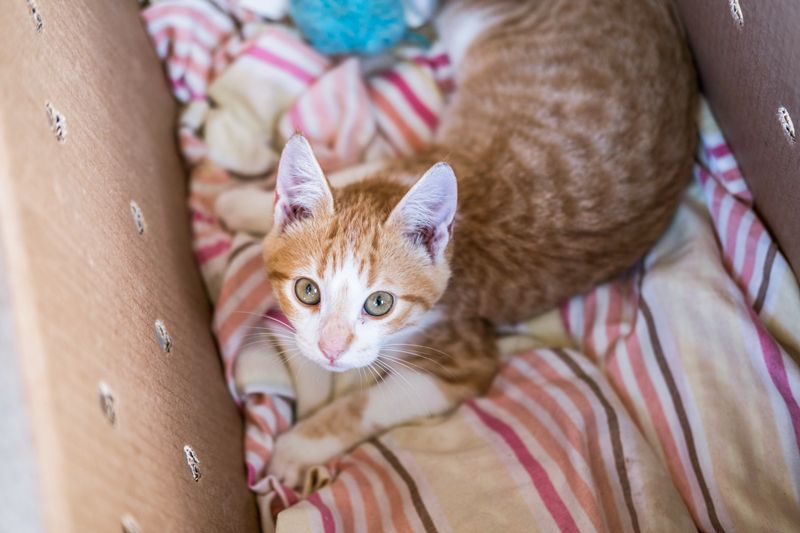
Meet the players
Dozens of organizations and hundreds of volunteers come together at Spayathon, each playing an essential role. Together, they make Spayathon happen.
The ground teams
At each location, volunteers transform a stadium or convention center into a functioning veterinary clinic. Setup requires plenty of grunt work—and teamwork. And on the first clinic day, when the doors open and people and pets start streaming in, that work pays off. “It truly shows that ‘if you build it, they will come,’ ” says Chrissy Beckles, founder and president of the Sato Project. Beckles’ team members (and all ground team volunteers) have crucial roles that allow the surgeons to focus on their work. They distribute wristbands to clients, run the registration table, carry snoozing animals to and from surgery, and hand out giveaways such as pet food, toys and treats. They keep the clinic running smoothly.
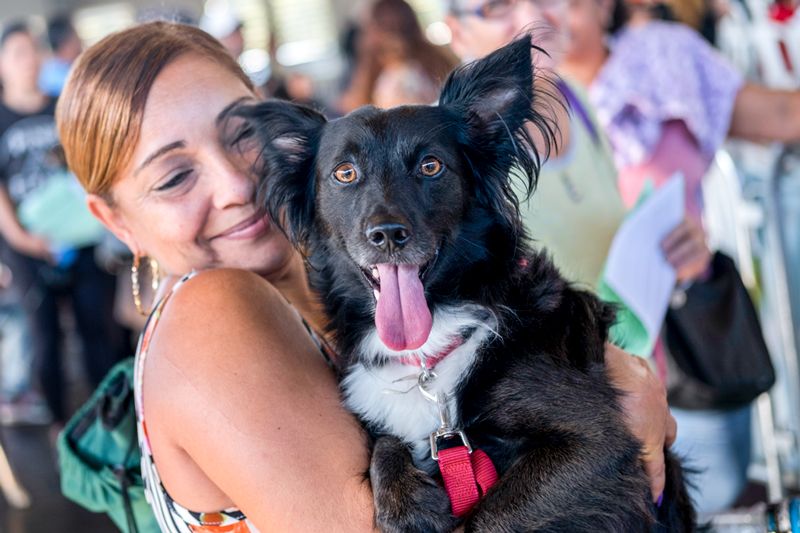
The clients
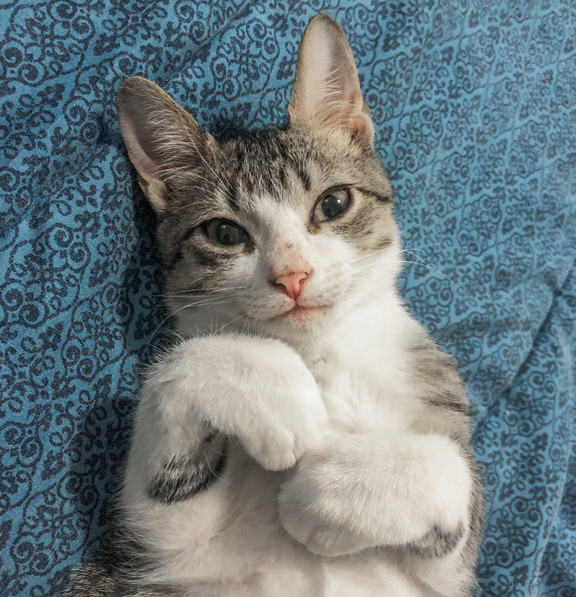
“So many people desperately want to care for their animals properly but do not have the financial means to do so,” says Beckles. Spayathon provides families access to free surgeries and vaccinations. Take Iris Jé Ortiz and her cat, Lucky. When Ortiz rescued Lucky from a parking lot, she soon discovered that the 3-week-old kitten was in rough shape. To afford surgeries for his fractured hip and two hernias, Ortiz and her husband sold their car. After that, neutering wasn’t in the budget. But Ortiz brought Lucky to the Cidra clinic in November, where he charmed volunteers with his sweet demeanor. “I’m so grateful to Spayathon,” says Ortiz. “Not only for what they do, [but] for how they do [it]. These people are so full of love and compassion for these little guys, and I have not enough words to describe the feeling I had in there.” In the wake of the recent earthquakes, access to free veterinary care is even more crucial.
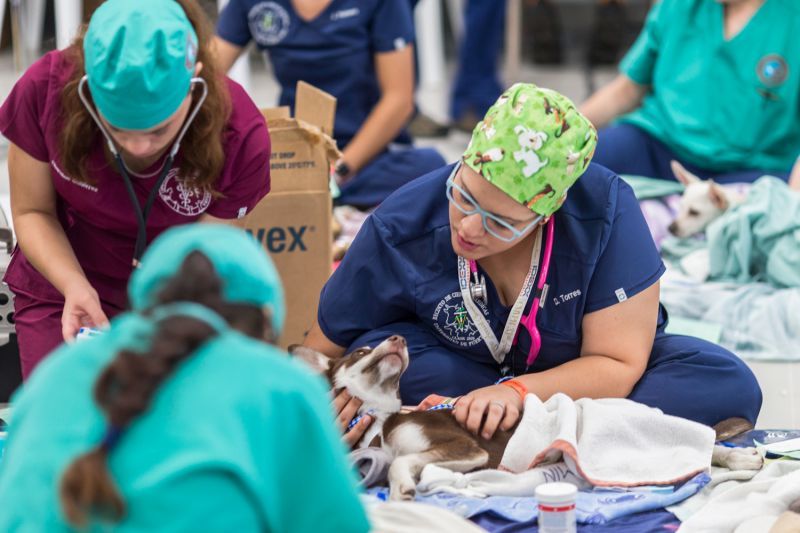
The veterinarians and vet technicians
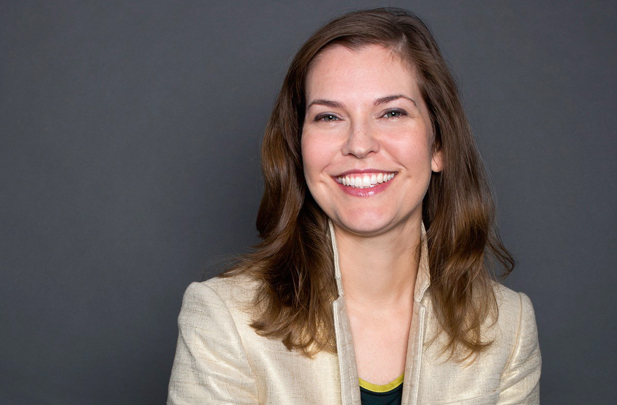
Spayathon medical staff must thrive in a fast-paced environment. Veterinarians need to perform surgeries quickly and precisely, while technicians must gently handle pre- and post-op pets at a speedy pace, administering anesthetics and delivering vaccinations to hundreds of animals each day. “Surgical precision” is more than a metaphor here, and it pays off: Spayathon has a lower complication rate than the mainland’s traditional veterinary clinics.
“The sense of collective meaning that has come from all of us working together, side by side with the government, has been so positive, different and inspiring.”
—Amy Mills, CEO of Emancipet
The Puerto Rican Government and veterinary board
“Government cooperation at this level is really a game changer for the animals on the island,” says Tara Loller, HSUS senior director of strategic campaigns for companion animals and the creator of Spayathon. Besides issuing an executive order that enables outside vets to practice on the island, the government provides locations, generators, security and more. And backing from the Puerto Rican veterinary board means the island’s veterinarians welcome the program. “We stand side by side with them in partnership,” says Loller.
The donors
Keeping services free makes Spayathon special. But “at the end of the day, this does cost something,” says Loller. Funders help cover those costs, while in-kind product donors make sure clients leave with goodies for their pets. And contributors who volunteer get as much out of Spayathon as they put in. “Participating in the Spayathon was life-changing,” says Dr. Laurie Peek from the Maddie’s Fund executive leadership team.
Document
